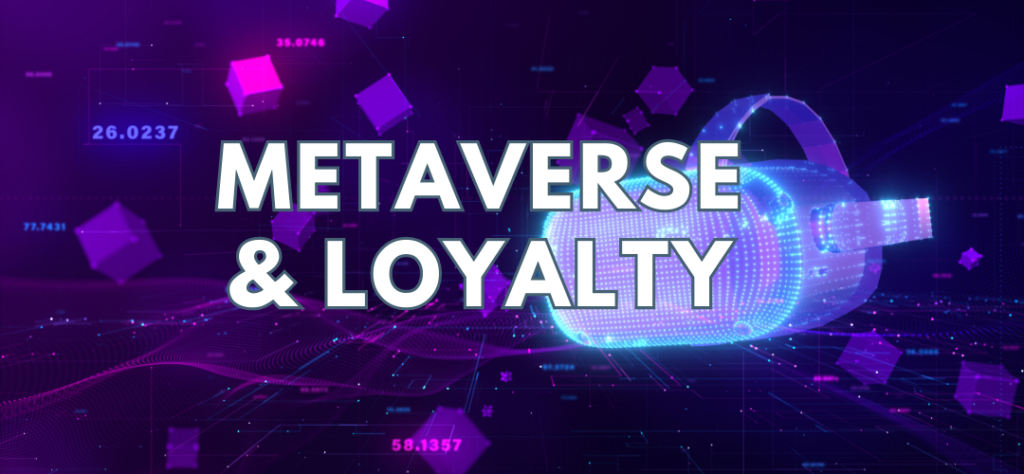
What is the metaverse
The metaverse is believed to be the inevitable evolution of the internet – a true and immersive digital 3D virtual world which you have access to from the comfort of your couch. The idea of this metaverse brings up images from the movie Ready Player One – but instead of only being a game, it is a whole world experience across work, school, shopping, and entertainment to name a few. Everyone will have their own avatar to interact and be a part of this digital new world.
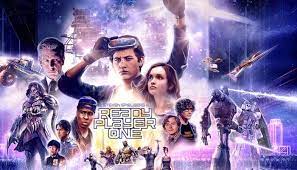
Think about how we use the internet today – we browse, watch, comment, like and share through a variety of devices, but these interactions are still largely limited to 2D (two dimensional) screens. On the other hand, the proposed vision of the metaverse will allow us to interact with the internet in a fully immersive, 3D world. The metaverse may be a place to ‘live’.
Technology is fast-evolving to make this a reality. Huge companies such as Facebook (now Meta), Google, Microsoft, and Nvidia are all investing time and big money to capitalise on what many believe to be the future of how we digitally interact, socialise and entertain ourselves.
For example, Meta launched Horizon Worlds in Dec 2021 which is a free virtual reality, online video game. Players can move around and interact with each other in various worlds hosting events, games and social activities. Horizon Worlds began to grow in audience by hosting musical performances, intimate comedy shows, thrilling sporting events, unique film experiences, and more. Most recently, John Legend and Notorious B.I.G. hosted events on Horizon Worlds. In October 2022, Horizon Worlds claimed to have 200k active users.
Epic Games, developer of Fortnite, in April 2021 host the infamous rapper, Travis Scott, with over 27.7m users in attendance, generating 10x the profit of a physical concert. Fortnite has proven that a combination of the digital and physical worlds is possible.
But how do you access the metaverse?
There are currently two technologies that have been developed and continue to gain popularity:
- Virtual reality: using VR headsets that encapsulate the user’s field of vision, with haptics such as gloves, vests, and full body suits. Apple has recently revealed the Vision Pro – which blends digital content with your physical space.
- Augmented reality: where digital overlays are mixed with the real-world environment. For example, Google Glass, car windshields with displays, or video games like Pokemon Go – the mobile phone game.
It should be noted that good connectivity (access to the internet through 4G, 5G, etc.) is required – which for many is still years away.
An example of the metaverse being used is the thriving video game universe, Roblox. According to gamer Erik the skeleton, “The (Roblox) Metaverse is a virtual world that is like our real world but there are endless possibilities. You can fly a spaceship, fight with a light saber and go back in time. You can kill zombies or be a zombie. You can rob banks, arrest criminals and adopt pets. You can play classic games, prop hunts and obi’s (obstacle courses). And you can make friends, play with friends and talk with friends.”
What technology drives the metaverse
There are seven technologies that experts have themed together to try and explain what technologies will be most impactful on the future of the metaverse: artificial intelligence, internet of things, extended reality, brain-computer interfaces, 3D modeling and reconstruction, spatial and edge computing, and blockchain.
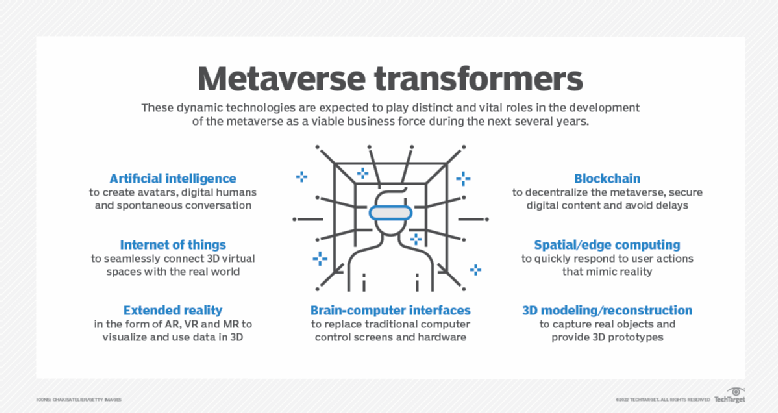
Futurists also believe that AI will become more closely connected with the metaverse experiences This combination will allow the creation of more personalised experiences. For example, enhancing user experiences with personal recommendations and virtual assistants.
How is the metaverse being used today
Currently, there are several platforms utilising elements of the metaverse, such as: Roblox, Decentraland and Minecraft.
Businesses have been experimenting with metaverse applications, such as hospital digital imaging systems, conference hologram setups, and integration with robotics.
And when it comes to payments and exchanging value, cryptocurrency, blockchain, and NFTs (Non-Fungible Tokens), are being utilised across various digital platforms.
How can loyalty be part of the metaverse
In essence, the metaverse should not be treated any differently to the physical world when incorporating loyalty programs. The metaverse provides an opportunity for loyalty programs to build innovative and immersive experiences their members will want to be part of. However, there are some key concepts that should be more deeply considered when engaging and expanding into the metaverse.
Firstly, the latest stats related to loyalty within the metaverse:
- Recent research by Jeong, et al. (2021) discovered that only by incorporating metaverse elements to their community, did loyalty begin to increase significantly
- Metaverse correlates strongly with positive feelings towards technology (including restaurant technology)
- 70% of metaverse-savvy consumers engage in loyalty programs
- Current users of the metaverse skew towards Gen Z and Millennials (PwC)
- 65% of Gen Z customers have spent money on virtual items
- Research from The Wise Marketer identified 71% of loyalty professionals believe that redeeming points for cryptocurrency is ideal for the future, 44% believe Asia Pacific will most likely adopt cryptocurrency rewards, and 30% believe offering cryptocurrency rewards will have a positive impact on the brand
- Deloitte research revealed 80% of companies in technology, media, and telecom and 92% of companies in the financial services industry, plan on gravitating toward the metaverse within the next 24 months
- 78% of customers that have used immersive shopping experiences find virtual showrooms appealing and 80% of retails believe within the next five years this technology will be incorporated (Acxiom)
Now to explore key concepts that require deeper consideration when bringing a loyalty program to life in the metaverse:
Philosophy of exclusivity and differentiation
The metaverse is equipped to deliver a truly exclusive experience for customers. Technology allows for a differentiation in experience between the physical and digital worlds. By offering exclusive products unavailable to the general public (or in the physical world), companies utilizing the metaverse can create a sense of exclusivity and reward their most valuable customers. This approach seeks to strengthen the bond between the brand and its loyal customers, making them feel appreciated and valued. This philosophy recognizes that loyal customers have demonstrated a higher level of commitment and engagement with the brand and deserve unique rewards and experiences as a result.
Nike is actively involved with metaverse-related activities, providing exciting rewards and experiences for its fans. Nike partnered with Roblox to create “Nikeland”, a digital world for fans to connect and play games. They have also acquired RTFKT to create one-of-a-kind virtual sneakers and artifacts. In 2022, Nike began .SWOOSH and .SWOOSH Studio, which is a web3-enabled platform. It has allowed fans to gain access to exclusive events, collaborate on virtual designs and be rewarded. Essentially, a member program driven by the fans.
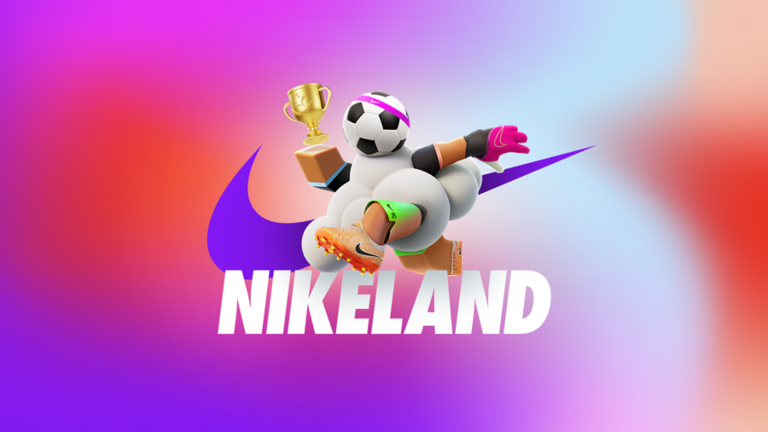
Providing exclusive products to members can also help differentiate a loyalty program from competitors. By offering something that is not readily accessible to non-members, companies create a sense of desirability and scarcity around their loyalty program. This exclusivity can serve as a strong incentive for customers to join and actively engage with the program (like Nike .SWOOSH), as they perceive it as a way to access unique offerings and experiences.
Design approach through hyper personalisation in the metaverse
The goal of personalisation is to enhance customer engagement and satisfaction by providing relevant and meaningful experiences. By making the program unique for each individual, loyalty programs can create a stronger emotional connection between the customer and the brand, ultimately leading to increased loyalty and advocacy.
This is exactly what the metaverse can open up for loyalty program operators. The metaverse allows a more immersive experience with no physical boundaries. It also enables companies to engage in different ways to stand out through personalisation. Fashion industry research by Park & Low (2023) revealed that by providing distinct and personalized brand experiences creates a greater emotional connection in the metaverse.
One key aspect of personalised loyalty programs is the inclusion of non-monetary rewards or experiences that cannot be directly purchased. These rewards go beyond traditional discounts or cash-back incentives and offer customers exclusive experiences, access to special events, personalised recommendations, or unique services. By offering non-monetary rewards, the loyalty program seeks to create a sense of exclusivity and personalized value for the customer. In the extensive article by Dwivedi., et al (2022) the metaverse will allow for hyper personalization in a whole new way to allow brands to advertise, promote, interact and engage with their audience that has never been seen before.
Design approach through gamification in the metaverse
The inclusion of gamification elements can make a loyalty program more enjoyable and interactive for participants. With metaverse, gamification is an ideal way to enhance user engagement and motivate desired behaviours in new and innovative ways. By adding badges and collectibles, a sense of achievement can be created and provide customers with tangible rewards for their participation and loyalty.
In the metaverse, there is a real opportunity to create badges and collectables for either status or to trade, e.g., Nike NFTs. Another opportunity for badges and collectables is to reward behaviour such as interactions. Imagine getting bonus points or a badge when you virtually try on the latest season releases at your favourite retailer.
Chunzhen has entered the metaverse through their retro style island. They reward players when they complete gaming missions with a mix of Gen Z’s childhood snacks. Not only are they rewarding loyal behaviour, but they are also bringing nostalgia to their target audience. This fusion also saw an increase in daily sales of 910%.

Design approach through brand immersion
By immersing customers in the brand’s visual and experiential elements beyond the physical environment but within a metaverse, companies can enhance brand recognition, build trust, and foster customer loyalty. With the immersive experience of the metaverse a distinct look and feel that is unique to the brand is created, evoking a sense of familiarity, authenticity, and connection for customers. Experimentation by Xue (2023), revealed that if communities are provided brand stimulation, regulation on rules of engagement/behaviour and stickiness opportunities to return, the metaverse communication will maintain a healthy long-term development.
The metaverse allows customers to look and feel the brand, and experience the functions of the product in a virtual world. By enhancing these experiences, it could be argued that loyalty programs in the metaverse will enhance a positive brand awareness and loyal customer.
Design of the loyalty program with metaverse currency in mind
Many loyalty programs include some form of currency or stored value mechanism – whether it be points, stamps credits or other. If a brand is looking to expand into the metaverse, they should consider how their existing (or new) mechanism might work best across the physical and digital realm. For instance, brands may consider tokenisation (the process of transforming the rights to an asset into a digital token on a blockchain) as a method for standardisation across channels and geographical borders. For example, one brand may choose to put their points currency on-chain, whereas another brand may issue stamps as NFTs.
Metaverse Group is already claiming to be using NFTs with its clients as a tool in loyalty to build deeper brand connections. Barbie has been involved in NFTs as part of the Barbie Signature program, as well as the Australia Open Tennis tournament campaign AO Artball.
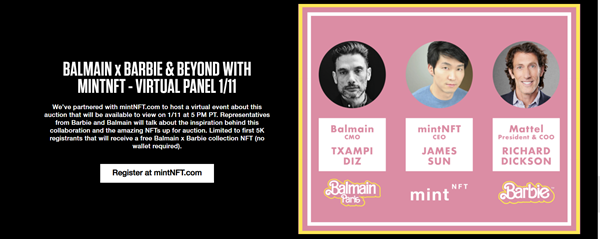
It should be noted that regulations are different around the world in regard to how tokens value impacts against a business as an asset. Ensure due diligence is completed if tokens are viewed as an asset or not.
Pick N Pay in Africa has levelled up for its loyalty program. Roblox has exploded in Africa – to help celebrate its 56th birthday, customers will receive a 150 Robux voucher when they buy two participating products. All customers need to do is remember to swipe their Smart Shopper card but they better be quick as the demand has been overwhelming.

Overall
The metaverse is going to be a new frontier – it already has positive traction in gaming, fashion, music, and education. The biggest advantage of the metaverse is that it allows companies and brands to provide more immersive experiences with members and fans. Companies can create innovative content through the metaverse and design a concept space to secure brand awareness and loyal customers. By expanding a program into the metaverse, a loyalty program can evolve, become hyper-personal and allow a real connection.

